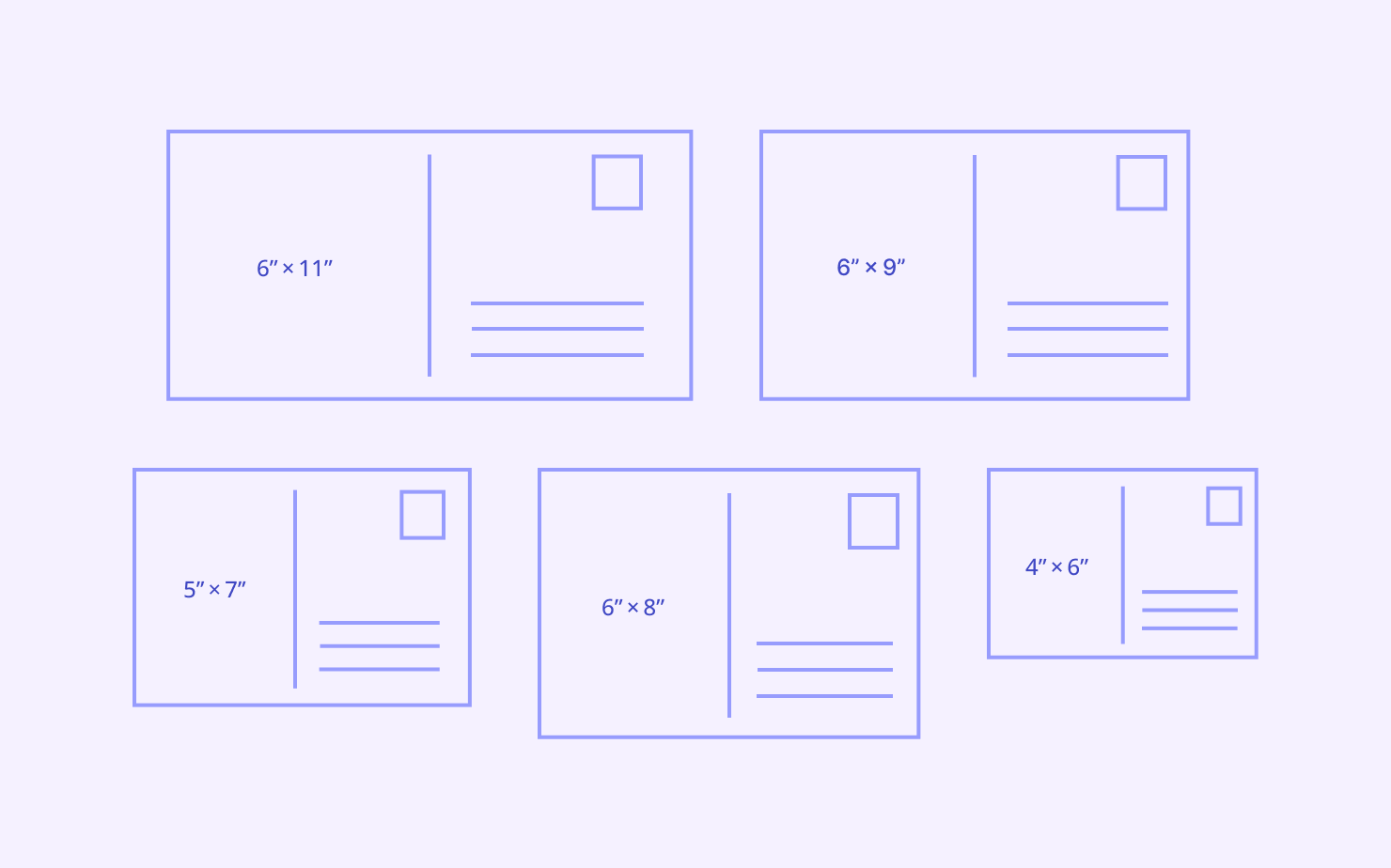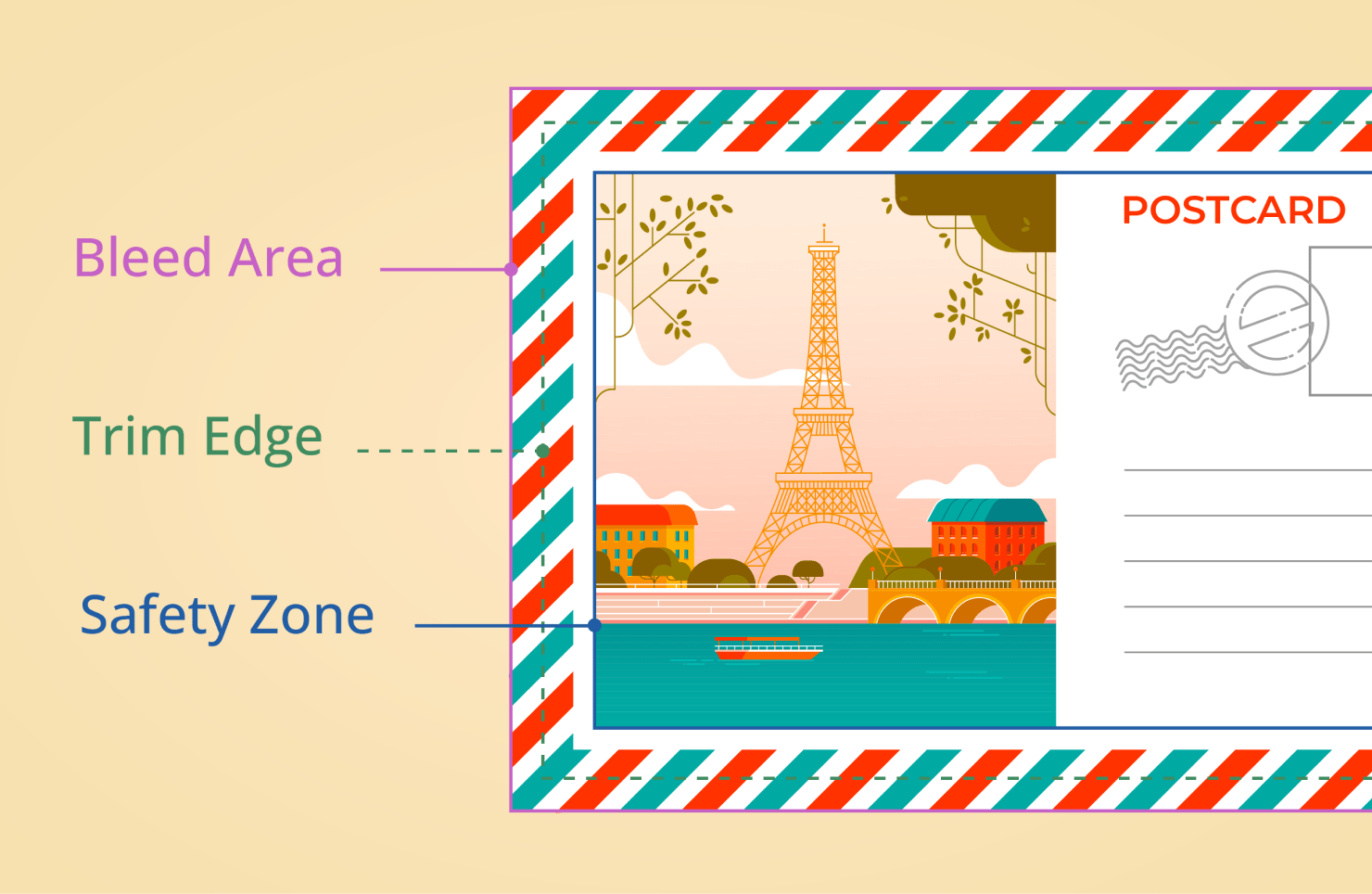Main Postcard Sizes—A Simple Guide
Postcards are a direct method of interacting with customers, loved ones and friends. You can use them to showcase your upcoming product or offers to your customers. These documents normally carry a combination of visual and textual messages.

For creating catchy and impactful postcards, you can use Swift Publisher to get an array of powerful layout tools and variable templates to design and craft your masterpieces.
Maximum and Minimum Postcard Sizes
Postcards can be paper or digital. The latter is very flexible as you can create a card of any size, shape and content and edit it any time. Paper postcards have some standards, which we will discuss in this guide.
The postcard sizes are of great significance as they dictate your cards’ design, cost and mailing class. The USPS sets the minimum and maximum postcard size limits for mailing.
Please note that your postcards should be rectangular. If they are of any other shape, USPS will not consider them in the category of postcards. Therefore, you would have to pay higher costs to mail them.
The size of a postcard is measured in length, height and thickness. The minimum measurement requirements for a postcard are 3.5″ × 5″ × 0.007″ (L × H × T) whereas the maximum measurement limits defined by USPS for a postcard are 4.25″ × 6″ × 0.016″ (L × H × T).
The thickness is also important to consider because your postcard could easily get damaged inside the mail processing equipment. On the other hand, the length and height limits should also be followed. If you exceed the limits, the postcard will be considered a letter, which will cost you more to mail.
Standard Postcard Sizes
Postcards come in different sizes and designs to share your message. However, it is more practical to choose the standard postcard sizes that conform to the USPS guidelines and mailing requirements: 4″ × 6″, 5″ × 7″, 6″ × 8″, 6″ × 9″, 6″ × 11″.

Things to Take Into Account When Choosing a Postcard Size
A postcard size selection is more important than it may seem. If you select the wrong size, you may waste time and money, as the wrong-sized postcards will not hit the right tune. Therefore, you must think of the needed size carefully, considering your design, content and call-to-action (CTA) requirements.
The postcard design depends massively on the selected size and various factors described below.
Postcard Safe Area
The safe area is the main body of the postcard with all the textual and visual data: text, header, footer, graphics and CTA. The safe area is not trimmed; rather, it is utilized to showcase your message and product details or to highlight your marketing campaign. Therefore, you should select the postcard size depending on the space required to cover your postcard's content.
Postcard Bleed Area
The bleed area is the near-boundary area of a postcard; the postcard graphics extend to this area. The purpose of utilizing the bleed area is to give the postcards a neat and professional look. The bleed will let you avoid the white edges of the postcard.
Postcard Trimming Area
The trim area specifies where the postcard is to be cut, and it defines the actual edges of a postcard. In an ideal postcard structure, the trimming area lies between the bleed and safe areas.

When To Use Different Postcard Sizes
The size of the postcards dictates their applicability. Therefore, you must know the use and the scope of the postcards to select the suitable size for your needs.
4″ × 6″ Postcard
This is the smallest postcard. Therefore, you can use it for basic content, a logo or other small graphics. You can also use this postcard when you want to convey a short message, such as an invitation to a book fair or a holiday party.
5″ × 7″ Postcard
This postcard size can include a lengthy description, graphics and a CTA. Alternatively, you can also increase the font size to utilize the extended space. Wedding cards and invitations to festivals or other events can be created with this size.
6″ × 8″ Postcard
This size of the postcard is perfectly viable for showcasing a product catalog. Therefore, it can contain descriptive text and many images. However, you should use a moderate font size to display all the information within the safe area.
6″ × 9″ Postcard
When you want to convey a message out loud, you can use the 6″ × 9″ postcard. For example, you can easily utilize the extended height to use a bold font.
6″ × 11″ Postcard
This is the maximum size of postcard available in the standard size list; it is slightly smaller than the full-size sheet. Therefore, you have lots of space to include content, high-quality graphics and bold CTAs.
Postcards are not dying any time soon. It is still one of the best ways to reach customers directly and precisely. Moreover, it is a viable way to share messages with friends and loved ones on special occasions
The size of the postcard is the most critical aspect that comes before even the design and content creation.